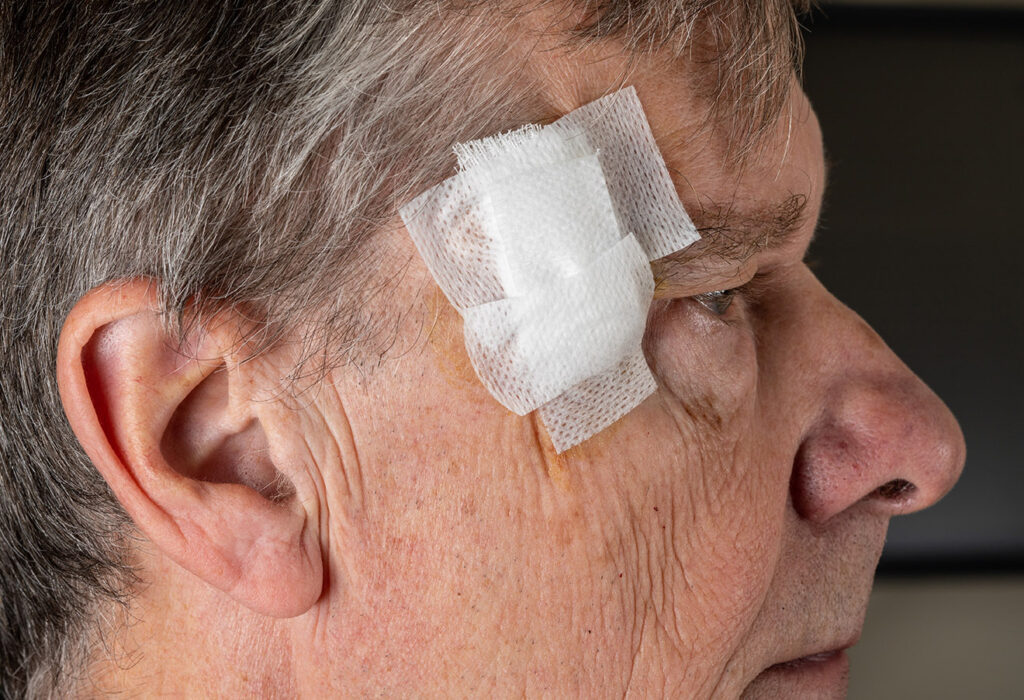Mohs Micrographic Surgery

What To Know About Mohs Micrographic Surgery
The Mohs technique has evolved into an efficient and extremely effective skin cancer treatment allowing the physician to remove as little tissue as possible with the highest cure rate. During the procedure, the tumor portion that can be seen is removed with a small margin. This specimen is then taken to the onsite lab while the patient waits. After it is processed, the physician examines 100% of the edges under the microscope. This allows the physician to precisely identify any remaining skin cancer.
There are five standard methods for the treatment of skin cancers. The two nonsurgical treatments are cryotherapy (deep freezing) and radiation therapy. The three surgical methods include simple excision, physical destruction (curettage with electrodesiccation) and Mohs Micrographic Surgery.
Mohs Preoperative Visit
If you would feel more comfortable meeting us before the day of your surgery, we welcome the opportunity for a preoperative consultation. If you feel comfortable doing so, you may also schedule your surgery directly. One of our Registered Nurses will call you before your surgery to provide you with additional information and to answer any questions you may have. If you take Coumadin, Plavix or aspirin on a daily basis, or if you normally take an antibiotic before having dental work done, please bring this to our attention when you schedule your surgery.
Before Mohs Micrographic Surgery
Be well rested and eat a good breakfast. Take your usual medications, unless directed otherwise. We request that you do not take any aspirin or aspirin-containing products, such as Anacin or Bufferin, for ten days prior to the surgery. If you take aspirin on a daily basis that is prescribed by your physician, we ask that you check with him/her to see if you may stop taking it prior to the procedure. In addition, please do not take Ibuprofen (Motrin, Advil, etc.) for four days prior to the procedure. You may substitute acetaminophen (Tylenol) if required. Do not drink any alcoholic beverages for 24 hours before the procedure as it causes increased bleeding.
The Day Of The Mohs Micrographic Surgery
Appointments for surgery are scheduled to begin between 7:30 and 8:45 a.m. It is a good idea to wear loose-fitting clothing and avoid pullover clothing. Also, if the operative site is on the face, please do not wear make-up. We will obtain your written consent for the procedure, photographs may be taken, and your blood pressure will be recorded. If you have any questions, please feel free to ask them at any time.
The area surrounding the skin cancer will be cleansed with an anti-bacterial soap. The anesthesia will then be injected into the area of the skin containing the cancer. This injection will probably be similar to the one you received for your biopsy. We will be as gentle as possible when administering this. It usually takes a few minutes to anesthetize the involved area and remove the tissue. After the tissue has been removed, it will be processed in our office laboratory.
Depending upon the amount of tissue removed, processing usually takes an additional 30-60 minutes. Your wound will be bandaged, and you will move to the waiting room while the tissue is processed and examined by the doctor. If the microscopic examination of the removed tissue reveals the presence of an additional tumor, we will go back and remove more tissue. The Mohs technique allows us to precisely map out where the roots of the cancer remain. Most skin cancers are removed in 1-3 surgical stages.
After Mohs Micrographic Surgery
Your surgical wound will likely require care during the weeks following surgery. Detailed written instructions will be provided. You should plan on wearing a bandage and avoiding strenuous physical activity for a week. Most of our patients report minimal post-operative pain which responds readily to medicines prescribed at the time of discharge. You may experience a sensation of tightness across the area of surgery. Skin cancers frequently involve nerves and months may pass before your skin sensation returns to normal. In rare instances, the numbness may be permanent.
You may also experience itching as your wound is healing. Complete healing of the surgical scar takes place over 12-18 months. Especially during the first few months and numbness, the site may feel thick, swollen, or lumpy, and there may be some redness. Gentle massage of the area (starting about 1 month after the surgery) will speed the healing process.
An indefinite follow-up period of observation is necessary after the wound has healed. You may be asked to return in six weeks and one year following the procedure. For skin care patients studies have shown that once you develop a skin cancer, there is a strong possibility of developing other skin cancers in the future. Should you notice any suspicious areas, it is best to check with your physician for a complete evaluation. You will be reminded to return to your dermatologist on a frequent basis for continued surveillance of your skin.
Service Available at the Following Locations
Healthy Skin Starts With Us
